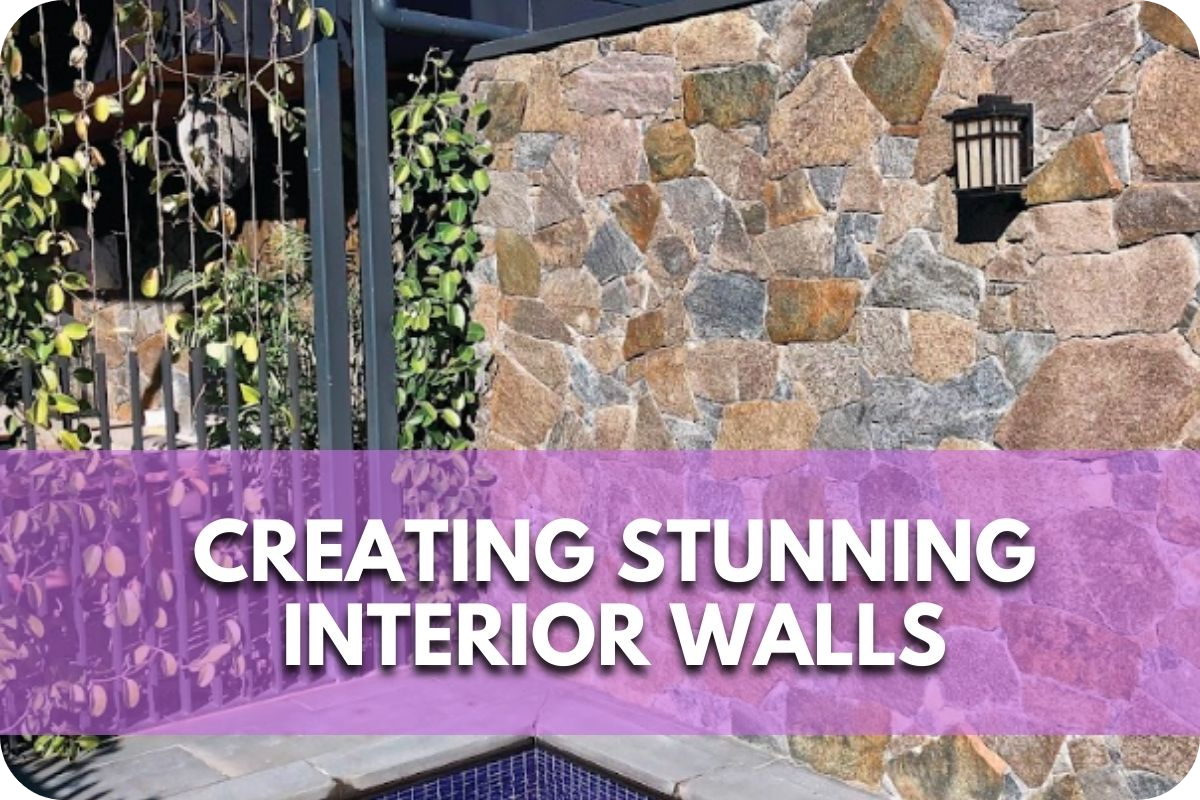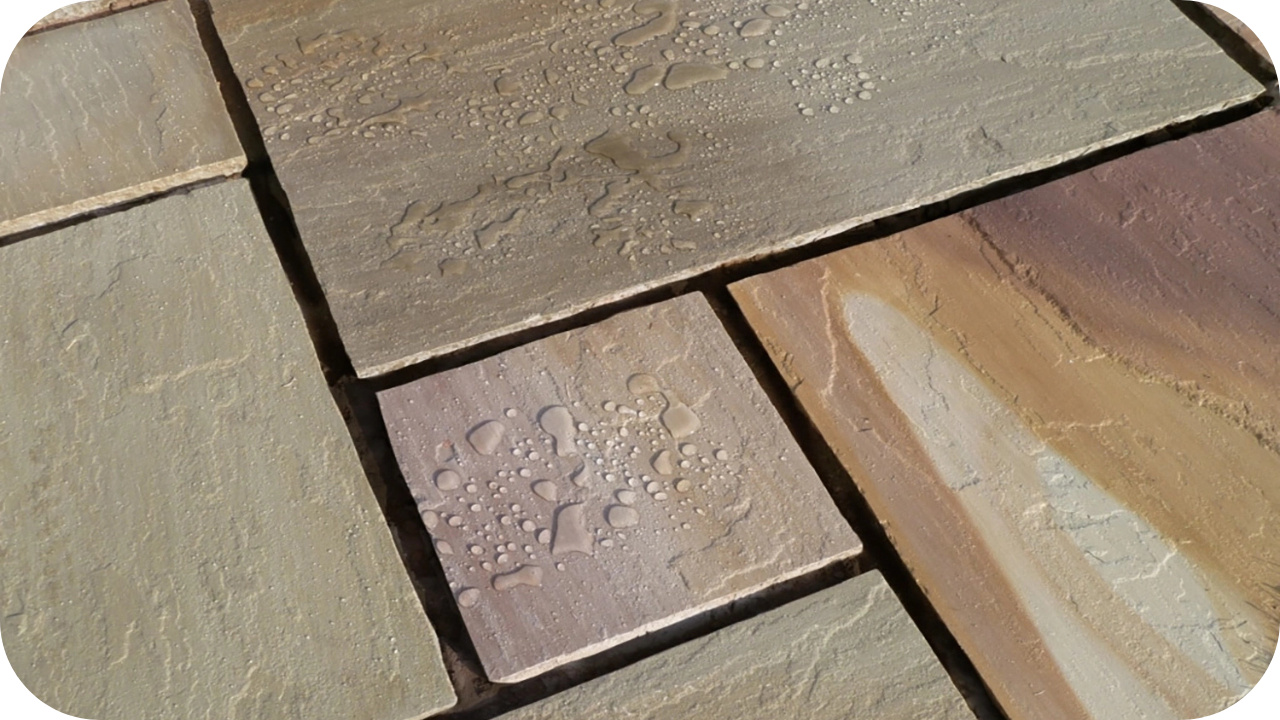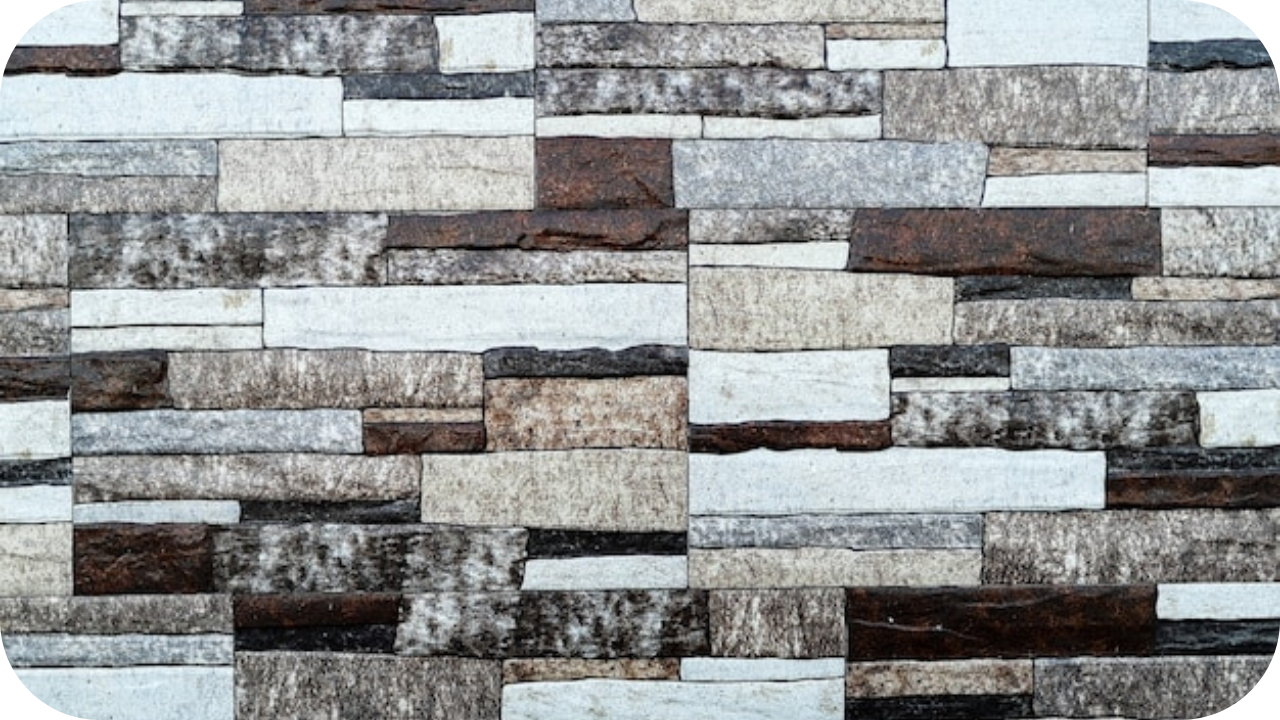
Struggling to elevate the style of your interior walls?
Conventional materials often lack the charm and resilience to make a statement, leaving spaces feeling mundane and uninspiring.
Turn to stone wall cladding for a transformative touch! From the sleek elegance of marble to the rustic allure of slate, our guide unveils the top stone options that promise both durability and dazzling aesthetics.
Elevate your interiors with the perfect blend of beauty and strength.
Considerations for Indoor Wall Cladding
When selecting stone for indoor wall cladding, several key considerations ensure both aesthetic appeal and functional longevity:
- Aesthetic Alignment: The stone should complement the interior design and colour palette. Natural stones like marble, slate, and limestone come in various hues and textures that can enhance a room’s overall ambience.
- Stone Durability: Different stones have varying levels of porosity and durability. Choose denser stones, such as granite or sealed sandstone, to prevent wear and staining in high-traffic areas or spaces exposed to moisture, like bathrooms or kitchens.
- Weight and Installation: The weight of the stone is a critical consideration, as heavier stones require a strong support structure and precise installation. Ensure the existing wall framework can support the weight, or consider lightweight stone veneers as an alternative.
- Maintenance Requirements: Consider the maintenance the stone will require to retain its appearance. Some stones may need regular sealing to resist moisture and stains, while others require only occasional cleaning with specific products.
- Cost: Budget is always a consideration, as some stones can be expensive to purchase and install. Factor in the cost of the stone, additional materials for installation, and ongoing maintenance when making your choice.
Overview of Stone Options for Indoor Wall Cladding
When selecting stone options for indoor wall cladding, consider the following materials, each with its unique features:
- Quartz: Highly durable and non-porous, quartz resists staining, scratching, and bacterial growth, making it ideal for kitchens and bathrooms. It is available in various colours and patterns, including options that mimic other natural stones.
- Marble: Offers a luxurious and elegant appearance with its rich veining and diverse colour palette. It is best suited for formal spaces but requires careful maintenance to prevent staining and etching.
- Granite: Known for its extreme durability and resistance to scratches and stains. It is also available in numerous colours and patterns, making it suitable for high-traffic areas.
- Slate: Provides rustic charm and natural texture, popular for creating a warm and inviting atmosphere. It is also durable and relatively easy to maintain.
- Limestone: Features neutral tones for a softer, more sophisticated look but is porous and needs sealing to prevent stains.
- Travertine: Recognizable by its textured surface with pitted holes and troughs, travertine requires filling and regular sealing to maintain its appearance.
- Sandstone: Offers earthy colours and a natural appeal but needs sealing to enhance its durability and prevent wear.
Kakadu Quartz for Indoor Wall Cladding
Kakadu Quartz is an exceptional indoor wall cladding choice, offering aesthetic allure and practical benefits.
This type of quartz is characterized by its striking patterns, which typically feature a blend of earthy tones. These patterns can add a natural yet sophisticated element to any interior space.
One of the foremost advantages of Kakadu Quartz is its durability. As a manufactured stone, it is engineered to be non-porous, which makes it highly resistant to staining, scratching, and bacterial growth.
This attribute makes it especially suitable for high-traffic areas and moisture-prone environments, such as kitchens and bathrooms.
Additionally, Kakadu Quartz does not require the periodic sealing that natural stones demand, reducing maintenance efforts and costs. Its robust composition maintains its integrity and appearance over time, resisting the wear and tear that can degrade other materials.
Kakadu Quartz offers versatility in installation. It can be installed in large slabs for a seamless look or cut into smaller tiles to create intricate patterns and designs.
Its uniformity allows minimal waste during cutting, making it a cost-effective option for large-scale projects.
Beachport Quartz for Indoor Wall Cladding
Beachport Quartz is an excellent choice for indoor wall cladding, offering a perfect blend of aesthetic appeal and functionality.
Known for its soft, creamy hues that resemble coastal sand, this stone brings a touch of calm and expansiveness to any room. Its subtly marbled texture allows for a luxurious yet understated finish, making it suitable for various interior styles, from modern to traditional.
Functionally, Beachport Quartz is crafted to be exceptionally durable and low maintenance. Its engineered nature means it is non-porous, thus highly resistant to stains, moisture, and bacterial growth.
This quality makes it ideal for areas susceptible to spills and humidity, such as kitchens and bathrooms.
Unlike natural stones, it does not require regular sealing, significantly reducing upkeep efforts.
Beachport Quartz is versatile in terms of installation. It can be applied in large slabs for a seamless look or segmented into smaller tiles for intricate designs.
Its consistent colour and pattern ensure minimal wastage during cutting and fitting, which can be crucial for effectively managing project costs.
Shoreham Quartz for Indoor Wall Cladding
Shoreham Quartz is an outstanding material for indoor wall cladding, distinguished by its robustness and visual appeal. This quartz variant typically showcases a complex blend of grey and white tones, accented with subtle veins that replicate the natural beauty of stone.
The neutral colour palette makes it versatile, easily integrating into various design schemes from minimalist to more elaborate interiors.
One of the principal advantages of using Shoreham Quartz for wall cladding is its engineered durability. Its non-porous surface makes it highly resistant to scratches, chips, and stains.
This feature suits it, particularly for high-traffic areas and spaces prone to moisture, such as kitchens and bathrooms, where it withstands daily wear without compromising aesthetics.
Shoreham Quartz requires minimal maintenance; it does not need periodic sealing or special cleaners, simplifying the upkeep while ensuring longevity. This makes it a cost-effective choice for residential and commercial properties looking for long-term wall solutions.
Installation of Shoreham Quartz is straightforward due to its consistency in colour and pattern, which allows for seamless joins and a uniform finish across larger surfaces.
Whether used as a statement piece or part of a cohesive interior design, Shoreham Quartz provides a sleek, contemporary look that enhances the overall ambience of any space.
Case Studies and Examples
Case Study 1: Boutique Retail Space in Melbourne
Case Study: Location: A high-end retail store in Melbourne, Victoria.
Stone Used: Kakadu Quartz.
Description: The store’s interior design team chose Kakadu Quartz for its unique blend of earthy tones, including tans, browns, and hints of green, reminiscent of the Australian outback. This choice strategically created an inviting, warm atmosphere that complements the upscale products sold.
Case Study 2:Contemporary Home in Sydney
Case Study: Location: A residential property in Sydney, New South Wales.
Stone Used: Beachport Quartz.
Description: Beachport Quartz was selected for a modern home renovation to clad the walls of the living room and kitchen. The homeowners chose this stone for its soothing pale colour palette, which mimics the soft whites and greys of the Australian coastline, creating a serene and spacious feel.
Case Study 3:Corporate Office in Perth
Location: A corporate office complex in Perth, Western Australia.
Stone Used: Shoreham Quartz.
Description: The interior design team selected Shoreham Quartz for the main lobby and conference room walls to project a modern and professional image. The stone’s muted grey tones and subtle veining provided a sophisticated backdrop that complements the sleek corporate furniture and high-tech equipment.
Maintenance and Care of Indoor Wall Cladding
Maintaining and caring for indoor wall cladding effectively involves straightforward steps to ensure its durability and appearance:
- Regular Cleaning: Use a soft cloth and mild detergent for routine cleaning. Avoid acidic or abrasive cleaners to prevent surface damage. Daily dusting with a damp cloth can keep surfaces free from debris.
- Immediate Spill Response: Act quickly to clean spills, especially on porous stones like limestone or sandstone, to prevent staining and water damage.
- Sealing: Apply a sealant periodically to stones such as marble, limestone, and sandstone to enhance their stain and water resistance. Depending on usage and stone type, reseal every one to two years.
- Avoid Harsh Chemicals: Avoid using harsh chemicals, bleach, or steel wool on stone surfaces, as these can scratch or etch the stone permanently.
- Professional Cleaning: Consider professional services for extensive cleaning or when dealing with stubborn stains. Experts can effectively restore the stone’s natural look using appropriate tools and techniques without harming it.
Budget Considerations and Installation Tips
Budget Considerations
- Material Costs: The choice of stone is a significant factor in budget planning. Premium stones like marble and granite come with higher price tags due to their natural origins and luxurious appeal. More budget-friendly options include engineered stones like quartz or even stone veneers that offer a similar aesthetic at a reduced cost.
- Transportation and Delivery: The weight and bulk of stone material can lead to substantial transportation costs, especially for projects requiring large quantities of stones from distant locations.
- Labour Expenses: Installing stone cladding requires skilled labour. Costs can vary depending on the installation’s complexity and the contractors’ experience level. Custom cuts and designs also add to the expense.
Installation Tips
- Wall Preparation: Ensure that the wall surface can support the weight of the stone. This may involve reinforcing the wall structure, particularly for heavy natural stones.
- Proper Tools and Techniques: Use the right tools and adhere to recommended techniques specific to the installed stone type. This ensures a secure fit and finish, minimising waste and potential damage during installation.
- Sealing and Finishing: Many types of stone must be sealed to protect against moisture and stains, especially in kitchens and bathrooms. Regular maintenance and resealing are crucial to preserve the stone’s condition and appearance.
Conclusion: Encouragement for Indoor Wall Cladding
Elevate your interiors with the perfect stone cladding to create stunning, enduring walls that reflect your style and stand the test of time.
Why wait?
Reach out to splendour in stone now and start transforming your space with the beauty and resilience of the finest stones available.
More To Explore

How to Tell If Stone Is Porous or Not
When selecting stone for your home or project, knowing whether it’s porous can make a huge difference. Porosity affects how your stone absorbs water, stains,

Split Face Stone: What It Is and When to Use It
Looking for a unique, durable material to elevate your next project? Split face stone might be the perfect choice. Known for its textured finish and


